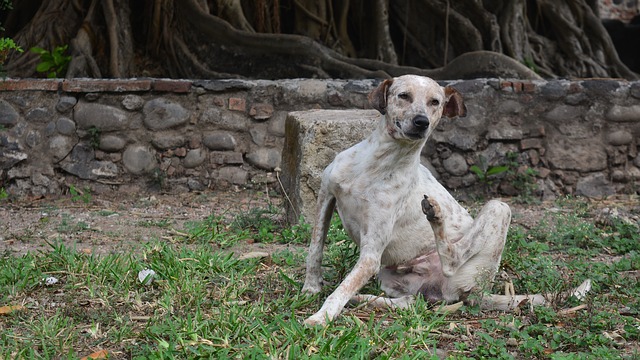Fleas are dog’s worst nightmare. These nasty insects can affect the health and well-being of your dog in several ways.
For instance, the scratching and irritation that they may cause to your furbaby can beyond imagination.
These varmints also feed on the blood of your dog and can expose him to a wide range of diseases, including anemia, Bartonellosis, tapeworm, and flea allergy dermatitis among others.
Flea infestation is also unpleasant for your family members; they can end up with unsightly red bite marks, itching, and unending scratching of the body.
So, what should you do when these small invaders attempt to overtake your pooch’s health and well-being? Fight back, of course! But where do you start?
Well, most dog parents opt for commercial products that are often marketed to kill fleas and ticks.
While some of these products work wonders at killing and preventing fleas, some dogs tend to react poorly to these chemicals and may suffer symptoms like vomiting, diarrhea, skin irritation, and seizures.
Put simply, no pesticide is 100% safe to your dog—even those that are being marketed as “natural”.
So, if you really don’t want to expose your dog to chemical pesticides, your best bet is homemade remedies.
In this post, we will highlight home remedies that can help you stop fleas from wreaking havoc on your pup but are probably lying around your house.
Let’s begin with a few basics:
Where Do Dogs Get Fleas?
One of the most common ways your pup can pick up fleas is from his environment following contact with other dogs, pets, or wildlife.
Your dog can also get infested when you drop him off in a pet grooming salon, dog boarding facility, or even when he hangs out with other pets in the park.
You and other members of your family can also give your dog fleas.
When you pat other dogs, walk, or hike in certain areas, fleas can latch on your clothing and eventually finds its way to your dog or home.
How Do I Tell That If My Dog Has Fleas?
If it is your first time dealing with fleas in dogs, you are probably asking yourself: does my dog have fleas?
To be sure about this, you need to inspect your dog. Here are a few tips on how to go about it:
I
Fleas don’t like light and will tend to hind within the furrier areas of your dog’s body such as inner thighs and belly.
Comb through such areas with a comb or your fingers, paying special attention tender spots like your dog’s armpits, ears, and groin areas.
The easier way to reach these areas is to let your dog lie down on his back like he would for a belly rub.
Fleas are tiny copper-like insects scurrying along the surface of your dog’s skin.
II
Another way to tell if your dog has fleas is to check for “flea dirt”.
Flea dirt is essentially blood meals that fleas defecate on your dog’s skin, leaving tiny black particles.
They look like pepper specks scattered on your dog’s skin.
Pick off some specks and put them on a paper towel and add a splash of water.
If there’s red staining when water and the specks mix, then it’s flea dirt—and that implies that your dog has fleas.
III
In case of severe infestation, you may also notice your dog scratching, chewing, or licking themselves than normal.
Your dog may also begin loosing hair. If you notice any of these signs in your dog, you should take a closer look.
Understanding the Lifecycle of Fleas
Fleas are able to easily infest your dog due to their rapid rates of reproduction and evolved lifecycle.
So, to effectively use home remedies to get rid of fleas on your dog, his environment, and your home, it is important to understand their lifecycles.
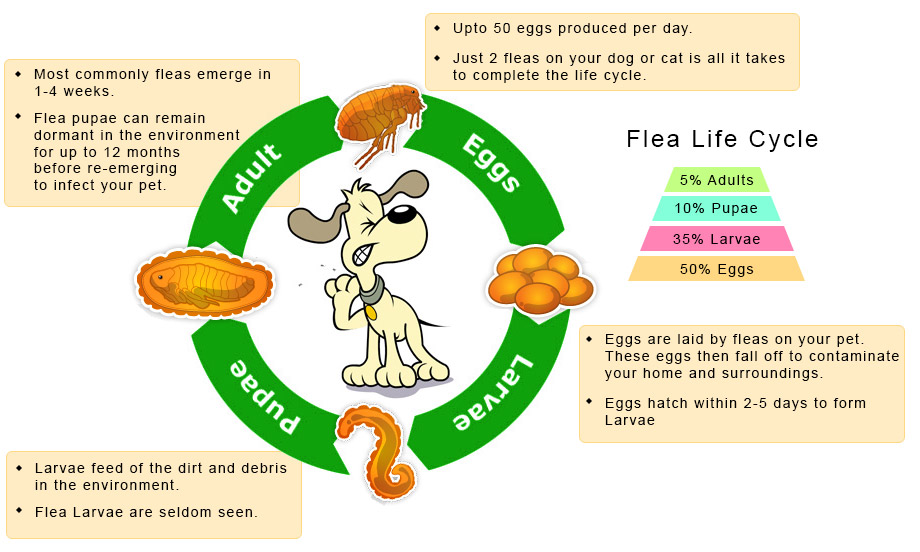
Image source: Vet Supply
A. Eggs
These are usually laid on the host but may fall off and end up in carpets, floorboards, upholstery, etc.
One female is capable of laying a hundred to several thousands of eggs over the course of its life.
The eggs can stay alive for up to a year and that’s why they represent approximately half of the flea population in an environment.
B. Larva
The eggs hatch into wormlike larva. They are about 0.06-0.16 inches long, making them hard to spot unless you use a flashlight.
They feed on flea feces in the environment and prefer dark and humid environments like carpets and beddings.
In 1-2 weeks, they molt 3 times before they wrap themselves in cocoons and enter the pupae stage.
They are believed to comprise about 35 percent of the flea population in an environment.
C. Pupa (Cocoon)
The pupae are almost as tough as the eggs. They metamorphose into adults inside their tiny cocoons.
This can take about 7-10 days if they detect that their prey is close.
However, if they don’t sense any prey nearby, they can remain wrapped up for several weeks.
Some of the cues that may trigger them to hatch include heat, motion or vibration, and elevated carbon dioxide levels.
This explains why you can go from seeing zero fleas on your dog to suddenly seeing tons.
This stage represents about 10 percent of the flea population in an environment.
D. Adult
After sensing that a host is nearby, the adult fleas are triggered to emerge, jump, and settle in a host, feeding on his blood.
They live for about 4-6 weeks. Females lay eggs after 1-2 days after feeding.
Adult fleas make up approximately 5 percent of the flea population in an environment.
To break the flea life cycle and keep your dog and home free of these pesky insects, you should be ready to target all their hideouts.
50 Recommended Home Remedies to Get Rid Of Fleas on Your Dog
1. Coconut Oil
Coconut oil has lauric acid, which coats the exoskeleton of fleas, limiting their mobility and suffocating them.
As a result, the fleas are repelled from your dog’s skin. Coconut oil also moisturizes your dog’s skin in the process and kills yeast, too.
Take a glob of the oil and work it between your hands till it liquefies then rub or massage on your dog’s coat, ensuring it reaches down the skin.
You can also give coconut oil to your dog orally.
Add about 1 tablespoon per 20 pounds of your dog’s weight 2 times a day in his food or favorite treat.
Related: How to Make Coconut Oil Spray for Dogs
2. Apple Cider Vinegar
Apple cider vinegar makes your dog’s skin and coat more acidic. Fleas cannot tolerate such environments, so they get repelled.
Mix equal parts of Apple cider vinegar and water in a spray bottle and spray the mixture on your dog.
However, vinegar can sting your dog if it gets into contact with open wounds, so be careful when spraying. Avoid nose, eyes, and ears as well.
If your dog is not a picky eater, you can add 2 tablespoons of vinegar into his food, water, or treat for more added protection from fleas, especially during the warm-weather months.
3. Garlic
Feeding a small amount of garlic can also help your canine companion repel fleas.
The sulfur in garlic gets excreted through your pooch’s skin, repelling the fleas.
Probably you are worried that it can harm your dog. Well, you should because garlic can be harmful to pets if taken in large quantities.
Nonetheless, it is safe and can help your dog get rid of fleas, ticks, and keep a wide range of diseases at bay if you feed him the right amount.
For instance, anything from half of a clove to 2 cloves is considered to be safe to dogs (depending on their size and age).
Preferably, use no more half a clove per 20 pounds of your dog’s weight on a daily basis.
Like any herb or drug for dogs, watch for potentials sensitivities in your dog if you decide to use this method.
If your dog has a history of hemolytic anemia, avoid giving him garlic of any form.
High dosages of fresh garlic are also believed to deplete dog’s intestinal flora.
So, if the flea treatment is successful, consider decreasing the dosage.
4. Table Salt
Table salt kills fleas by altering the pH of the fluid that carries oxygen and nutrients through their bodies.
Mix 1 part of table salt with 10 parts of water and soak your pup in it, ensuring that saltwater doesn’t get into his eyes and ears.
Rinse off with warm water (without salt) and then with cool water.
Alternatively, rub dry salt on your dog’s coat and leave it on for about 2 hours.
Thoroughly remove salt traces and rinse with clear, warm water. The second method is recommended for heavy flea infestation.
5. Brewer’s Yeast
Brewer’s Yeast is a kind of yeast that is often used in bread and beer making.
It packs a lot of vitamins and minerals like Chromium, Vitamin B, and selenium.
It is believed that fleas loathe the smell of Vitamin B1 and just hate the way yeast smells.
If you feed Brewer’s yeast to your dog on a regular basis, he will excrete vitamin B1 as well as a yeasty odor, which ultimately repels the fleas.
Proponents of this flea treatment method suggest giving your dog ½ tablespoon of brewer’s yeast if he is a small dog and 1 tablespoon per 30 pounds of body weight if he’s a larger breed.
It is important to note that some dogs may be allergic to yeast, so consult your vet before trying this method or if you notice abnormal symptoms after feeding your dog Brewer’s yeast.
Some dogs are also picky and may not like the taste of yeast. If your dog falls in either of the categories, you may consider using other home remedies.
From our research, many dog owners have gotten excellent results with this Brewer’s yeast brand.
6. Borax
Borax or sodium tetraborate decahydrate is a popular laundry and cleaning aid for both household and industrial use.
It is very effective in killing and controlling fleas, ticks, silverfish, beetles, cockroaches, grain weevils, ants, and other insects.
Simply apply a thin dusting of the borax powder where there are high concentrations of fleas.
When they walk through the dust, it will cling on their legs and poison them when they ingest it.
It also has a desiccating effect and can cause fleas to die of dehydration.
There are a few precautions to keep in mind if you are going to use borax:
- Never apply the powder directly to your dog’s body as it can cause irritation and other health issues.
- Avoid using borax near household herbs and plants as it can cause toxicity.
- Borax can cause breathing issues in cats, so don’t use it near cats.
- Avoid using borax around young children as it may lead to allergies and lung distress if ingested in large quantities.
- Pregnant women shouldn’t come into contact with the powder.
- Wear a face mask and gloves when applying borax to prevent potential skin irritations.
7. Rosemary
Besides being a great fragrant and tasty seasoning, Rosemary is a potent flea repellant.
You can use it in oil form, powder form, or as a bath.
When you decide to use rosemary oil, spray a few drops of the oil on your dog’s collar to repel fleas.
As a powder, you can use it individually or mix it with other flea repellants like lavender and peppermint to make it more effective.
If you opt for a bath, use the following procedure to prepare a rosemary flea dip:
- Boil around 1 liter of water with about 2 cups of rosemary for about 5-10 minutes.
- Allow the mixture to cool and strain the mixture.
- Save the liquid and discard the leaves.
- After the water has cooled a bit, soak your dog in it.
- Leave your dog to dry naturally without rinsing him
8. Lemon
Lemon has a citrusy smell and potent acidic properties that will kill or repel fleas on contact.
Cut a lemon into quarters, cover it with boiling, and let it steep overnight.
The following morning, spray to the solution on your dog’s coat.
Target the spray under his legs, behind the base of his tail, and behind his ears but ensure that the solution doesn’t go into your dog’s eyes.
You can also rub the lemon solution on red and irritated areas of your dog’s body or where you suspect the fleas to be hiding.
For more potency, you can use more lemon slices or add other essential oils to the solution.
9. Cedar Chips Or Oil
Fleas don’t like the smell of cedar. So, one easy way of protecting your dog from flea bites is spreading cedar chips around his kennel, bed, and your yard to help keep these pesky insects away.
Alternatively, apply cedar oil on your dog’s coat to repel fleas.
Dilute 3-5 drops of the oil with 1-2 tablespoons of water and apply to areas of the body you suspect to be harboring the fleas or simply saturate his collar or bandana with the mixture to keep the fleas away.
10. Baking Soda
When mixed with table salt, baking soda kills adult fleas and their eggs by dehydrating them.
Mix 1 tablespoon of baking soda with about one and a half cups of water.
Wet or bath your dog with warm water.
Soak the baking soda solution into your dog’s coat, ensuring that the solution doesn’t get on his face.
Allow the mixture to sit on for about 5 minutes then rinse off with clean water.
Baking soda can also be used to kill fleas in your dog’s environment, including carpets, beddings, yard, and furniture.
Baking soda tends to lose its potency considerably fast. So, if you’ve opened a box for 1-2 months, the baking soda insider may not be effective in killing fleas.
To preserve the powder’s potency, strive to purchase small packets of baking soda.
To test whether the powder is still active, add it to 3-5 drops of vinegar and see how the mixture bubbles.
If effervescence or bubbling occurs instantly and continues for a few minutes, then your powder is still potent.
However, if there are no bubbles or if they are forming slowly, consider getting a new powder.
11. Dawn Dish Soap
Dawn dish soap creates surface tension (or some form of surfactant) that compromises the exoskeleton of adult fleas, making them sink and drown in water.
It also prevents the eggs from sticking to your pup’s hair follicles.
Lather your dog properly with the soap and allow it to sit for 5-10 minutes before rinsing.
You may repeat the process after 1 week to ensure that all fleas are eliminated.
When soaping your dog, it is advisable to start with the neck area and work your way down the body.
The soap will make the fleas to scramble and it won’t be comfortable to your dog if they end up on his face.
12. Aloe Vera
Because Aloe Vera has a high pH, when you apply it on your dog’s skin, it creates an inhospitable environment for fleas.
This means that the fleas will no longer find your dog’s coat a suitable place to reproduce and they’ll ultimately abandon the dog.
Besides, Aloe Vera is rich in salicylic acid and cinnamic acid, which are all great in mitigating itching and red spots—typical symptoms of flea infestations.
You can apply Aloe Vera oil directly on your dog’s coat or dilute it with water and spray it on your dog.
Aloe Vera is also known to be effective in fighting fleas from the inside, so you can safely give it to your dog orally—4 tablespoons per day for about 2 weeks will suffice.
13. Lavender
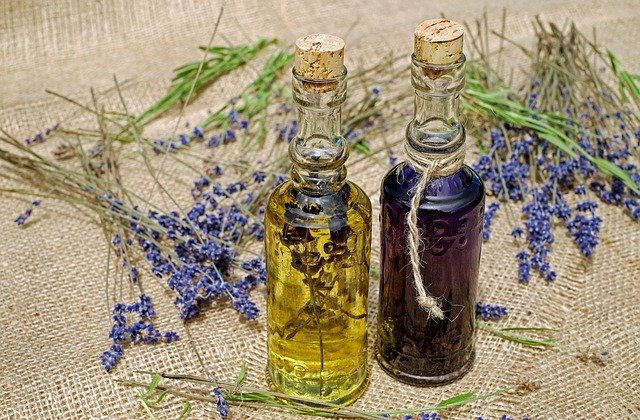
Lavender oil not only repels fleas from dogs but also soothes irritated skin and frayed nerves.
To use lavender as a home remedy for fleas, let it steep in water overnight then strain the liquid the following morning and spray on your dog’s coat.
You don’t need to rinse it. You can also dip a comb into the lavender solution and brush through your dog’s coat.
Lavender is only recommended for topical use, so don’t be tempted to administer it orally.
Besides, before using lavender on a pregnant dog or a dog with medical issues, consult your vet first. Finally, always ensure that lavender doesn’t reach your dog’s eyes.
14. Raw Baltic Amber Resin
Amber is essentially a petrified form of resin that trees produce to protect themselves against fungi and insects after an injury.
Baltic amber has high amounts of succinic acid compared to other types of amber and that’s why it is believed to have potent healing elements.
One theory behind the use of Baltic amber to repel fleas is that it is rich in aromatic chemicals, which gets released when it’s warmed by your dog’s fur.
These chemicals then repel fleas the same way they repel fungi and insects from trees.
Other people also believe that when the amber beads rub against the dog fur, the resulting friction creates static electricity, which makes it impossible for fleas to stay on your dog.
Baltic amber collars are non-toxic to dogs and easy to maintain. So, if you get one for your dog today, it will help him ward off fleas for a very long time.
15. Rubbing Alcohol
This is another potent and simple flea killer and repellant.
Mix one part of rubbing alcohol and one part of water into a squirt bottle.
Spray the mixture directly on the areas or items you want to protect from fleas.
Some DIY flea-killing aficionados recommend spraying directly on dogs, but it’s really not recommended as it can dry out or even irritate your dog’s skin.
If you have to use rubbing alcohol on your dog, wash and comb your pooch’s fur first and start with a small quantity to see how your dog reacts to it.
The repellant will kill fleas on contact, so to prevent the accumulation of dozens of dead fleas all over your dog or house, do everything possible to get rid of the fleas first.
Rubbing alcohol will only kill adult fleas but not their eggs. To eliminate the eggs as well, consider adding Dawn Dish soap to the mixture.
Related Post: How to Remove Tick from a Dog with Alcohol
16. Pennyroyal Herb
This creeping mint has excellent flea repellency properties due to its strong aroma.
Proponents of this herb suggest scattering dried leaves of the plant around your dog’s bedding and rolling up some fresh stems in your dog’s collar or bandana before you go to a pet’s park or tromping through the woods.
However, using pennyroyal on pets is associated with a few risks. For instance, the herb contains pulegone, which can be toxic to dogs, especially when ingested or when it comes into contact with the skin.
So, the safest way to use the herb for repelling fleas is to grow it in your yard or near places your dog loves to play.
If you notice any abnormal signs like allergy or itching after attaching the herb to your dog’s collar or bandana, consider removing the collar immediately and consult your vet for more professional advice.
17. Citronella
Made by steam distillation of different species of lemongrass (Cymbopogon), Citronella has a strong scent that wards off fleas and other insects.
Mix several drops of Citronella oil with warm water and other essential oils like peppermint oil, eucalyptus oil, lemongrass oil, and geranium oil, and use the solution to spray on your dog and his beddings.
Mixing Citronella with other oils increases its potency. However, you should understand that it will only repel fleas and not kill them, so it may not be a viable option for heavy fleas infestation.
18. Food Grade Diatomaceous Earth
Food Grade Diatomaceous Earth is a powerful way of killing fleas.
Once it comes into contact with fleas, their glass-sharp diatom edges will cut into the fleas’ exoskeleton and ultimately kill them.
While it is safe to use on dogs, there are a few precautions that you need to keep in mind when using this white powder:
- Ensure that your dog doesn’t accidentally inhale large amounts of the powder as it can cause acute respiratory issues.
- Pool-grade diatomaceous earth may be toxic to your dog, so always go for food-grade powder. With a food-grade option, you don’t have to worry even if someone accidentally ingests the powder.
- Ensure that your dog’s coat is dry when using the powder.
- Always use gloves and protective masks when applying the powder. Like any other powder out there, it can billow in the air and cause nose or eye irritation.
19. Peppermint
Peppermint has a unique scent that helps repel fleas before they even jump on your dog.
It also boasts potent antimicrobial properties that may aid in healing irritations and warding off potential infections caused by flea bites.
It can also come in handy in healing hot spots that your dog might have developed due to flea bites.
20. Eucalyptus Oil
Not only will Eucalyptus oil deter fleas but it will also nourish the coat and skin of your dog as well as aid the healing of irritations and hot spots caused by flea bites.
Mix ¼ tablespoon of the oil with 8oz. of water to make a flea repellant spray.
Spray the eucalyptus solution on your dog’s bedding, kennel, and toys—preferably 3 times a week.
This will kill and repel fleas from your dog and your home. You can also mix several drops of the oil with a baby shampoo or any other natural soap base and bathe your dog with it.
Alternatively, place a few drops of the oil on your dog’s homemade collar to repel fleas.
21. Horse Apples
Horse apples (also known as Osage oranges or Bois d’arc balls) are also known to repel a wide range of insects including fleas.
Cut the apples into half and stick each piece in your dog’s kennel or around places where he likes to play.
22. Neem Oil
Neem oil is another potent natural flea repellant that is not only non-toxic to dogs but also provides a wide range of health benefits.
It has a nasty smell, which makes dogs less likely to lick it off once you use it on your dog’s coat.
You can mix it with other oils and apply it topically on your dog, add it to your dog shampoo, or use it to make a flea spray.
If you don’t have time to bath your dog or make a spray, simply rub the oil between your palms and massage your dog’s coat, ensuring that the oil reaches his skin.
However, Neem oil should never be administered orally and some dogs may be sensitive or allergic to it.
So, consult your vet before using this oil on your dog or if you notice abnormal symptoms after using it.
23. Oregano Oil
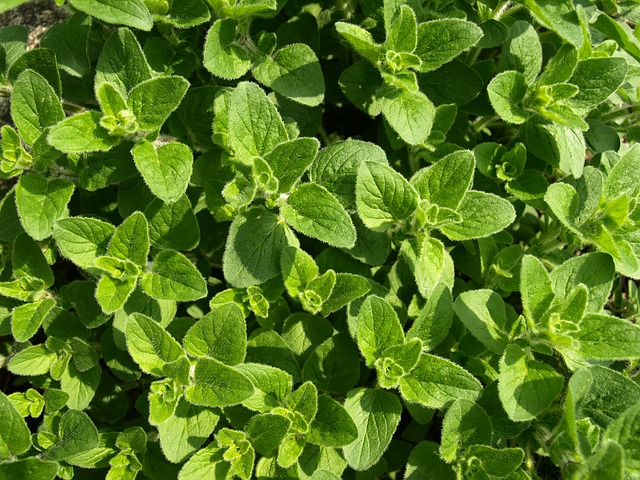
Oregano Oil has an ingredient called carvacrol, which is known to be an effective flea repellant.
The only issue with the oil is that it also contains phenols, which may be toxic to dogs.
So, if you decide to use this oil to deter fleas on your dog, strive to reduce its concentration as possible.
Mix one drop of Oregano oil with three drops of olive oil and apply the mixture on your dog’s coat, especially where fleas like to congregate like his belly, ears, and base of the tail.
Alternatively, add the oil to your dog’s collar or bandana to keep fleas at bay.
24. Pinewood Sawdust
Like cedar shavings, stuffing your dog’s beddings with pine needles will discourage fleas from settling.
If your dog has an outdoor-based kennel, consider scattering the sawdust around his kennel to ward off fleas.
25. Rue
Rue (or Ruta graveolens) has potent insecticidal and disinfectant properties, which can get rid of flies, mosquitoes, fleas, and a wide range of other insects naturally.
Plant the herb in your yard or simply rub it on your dog’s coat to keep the fleas away.
26. Chamomile tea
Fleas loathe chamomile, so you can use chamomile tea bags to repel fleas from your dog.
Simply steep the tea and once it has fully cooled, apply it on your dog’s coat.
The tea will not only repel the fleas but will also soothe itchy skin and red spots caused by flea bites.
Another easy way to repel fleas with chamomile tea is to leave the tea bags around your dog’s bedding or kennel.
27. Geranium Oil
Another great natural flea killer and repellant is Rose geranium oil.
Add about 4 drops of geranium oil to 1 – 1½ cups of water to make a spray that you can mist on your dog to ward off fleas.
You can also add a few drops of the oil to your dog’s bathwater or homemade flea collar.
Like Oregano Oil, geranium oil can be toxic to dogs, so ensure that it is highly diluted before using it.
28. Catnip
Catnip is another excellent herb that you can use to repel fleas from your dog because fleas hate its minty scent.
You can either grow it in your yard to repel fleas from your yard or rub its leaves over your dog’s bedding to get the pesky insects to move on.
Alternatively, apply catnip oil on irritated areas or hot spots on your dog or simply add it to your dog’s flea collar as an added layer of flea deterrent.
29. Olive Oil
Although olive oil is often used as a carrier oil or diluting other essential oils such as Oregano, lavender, and geranium, it can also repel fleas on its own.
It is believed that its high-fat content suffocates fleas and that it contains other natural ingredients that naturally repel fleas.
Rub the oil into the fur and skin of your dog and allow it to sit for a few hours.
Next, rinse the oil off or comb it out, especially if your dog has not groomed it out already.
30. Tansy Ragwort
Tansy (Tanacetum vulgare) is an effective all-round insect repellent that has been used for centuries to repel fleas, flies, ticks, and other insects.
It is rich in a wide range of alkaloids, making it toxic for fleas, other insects, and certain animals.
Besides repelling insects, it can also be used to get rid of lice and scabies.
31. Thyme
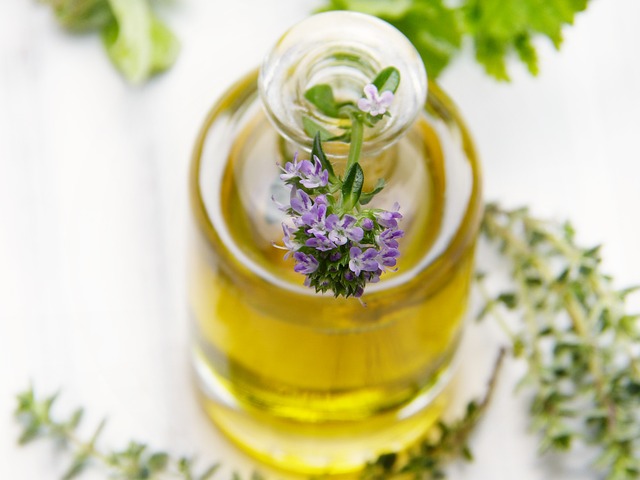
Thyme is another herb that shouldn’t miss in your garden due to its excellent medicinal, dietary, and ornamental uses.
It is not only good for killing fleas and other insects but it is also known to be a great fungicide and bactericide.
You can also use it as a pain reliever, an antiseptic, and for treating dermatitis.
Although you can use it topically on your dog, some dogs may be sensitive to the oil, so ensure that you test a small amount first.
Most importantly, dilute it properly before using it on your dog.
Related Post: Can Dogs Eat Thyme?
32. Wormwood
Wormwood or Artemisia is a perennial plant with dense, silver foliage.
Once used to wean children from nursing, this bitter herb can provide a powerful resistance to fleas, moths, ticks, and other insects.
Crafting tea from its leaves or mixing its oil with water makes an excellent flea spray.
33. Basil
Fleas and other insects dislike the taste and smell of Basil.
Using a basil-based spray can, therefore, help prevent fleas from taking up residence in your dog’s fur or your home.
Hanging Basil sachets on your dog’s kennel or in areas he likes to hang out can also protect him from fleas.
34. Chrysanthemums
Another plant that you should consider including in your yard to help you deter fleas and other insects is the Chrysanthemums.
It contains organic compounds called pyrethrins which penetrate the exoskeleton of fleas upon contact immobilizing and killing them.
35. Marigolds
These beautiful flowering plants can help you repel fleas, ticks, whiteflies, and a wide range of bugs via their scented foliage.
Their flowers are also edible and can be used to add color and flavor to salads.
36. Flea Traps
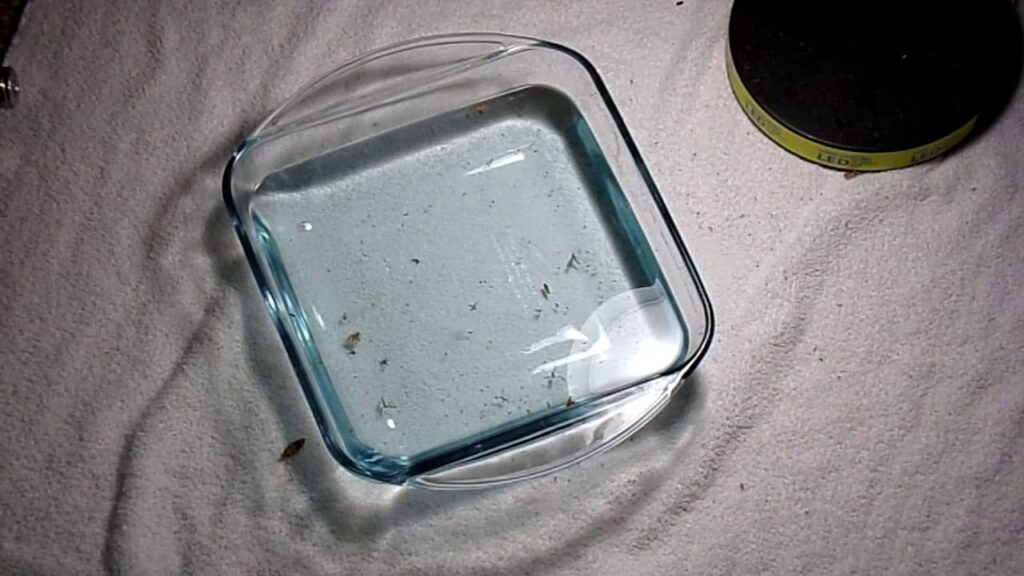
A flea trap is simply a light or lamp shown over a pan of soapy water.
When the room is dark (at night), fleas are attracted to the light, jump into the soapy water, and die.
Its mechanism is that simple and you can make one at home or buy a commercial option.
For instance, this one comes with convenient grabber glue to hold the fleas, making it safe around pets and children (saves you from the need to have a lamp in the middle of the children’s room).
37. Beneficial Nematodes
These are microscopic worms that feed on the eggs and larvae of fleas.
They are also great at getting rid of other unwanted insects from your yard like termites, grubs, and mosquitoes.
Apply nematodes to your yard, especially where your dog tends to hang out to eliminate fleas in the immediate area.
This can go a long way in helping you prevent flea re-infestations when your dog enters the house.
Wondering where to get nematodes? Look no further than online stores and of course, Amazon!
38. Sage
Like other herbs that we have highlighted on this post, fleas find the smell of sage unpleasant, making the plant a great flea repellant.
Add a couple of drops of sage essential oil to your dog’s shampoo or make a flea spray by mixing 15 drops of the oil and 2 cups of water in a spray bottle.
Mist the freshener on your dog’s kennel and areas of your home that you suspect the fleas might be hiding.
You can also smudge sage sticks in your home to repel fleas.
Wondering whether smudging is safe for your dog? Check this post: Is Burning Sage Safe for Dogs?
39. Fleawort
This is another herb that you should include in your yard not only for landscaping purposes but also to also help you repel fleas, ticks, flies, and other insects.
You can also use its seeds to treat constipation or irritated intestines in humans.
40. Spearmint
Like peppermint, spearmint is not only effective in repelling fleas but also safe for your dog.
It smells great and you can always use its leaves to make yourself amazing iced tea.
Placing spearmint sachets strategically in different locations around your home will cause fleas to reconsider their mission.
41. Lemongrass
Lemongrass has a high content of citral and geraniol, which fleas and other insects avoid.
Although it is relatively safe to use around dogs, it may cause stomach upset if your dog consumes large quantities.
42. Sweet Bay
Many cooks should be familiar with this great culinary ingredient.
Both its fresh and dried leaves are known to repel fleas, flies, and other insects away.
It is also known to ward off mice and other vermin.
43. Hydrogen Peroxide
Hydrogen peroxide is another excellent flea treatment for dogs. It drowns fleas and damages their exoskeleton.
By applying it on your dog’s coat, fleas will die instantly and drop off. However, this is not recommended because it can irritate skin and discolor your dog’s fur.
The safest way to use hydrogen peroxide against fleas is by using it to wash your dog’s clothes and bedding. This will kill adult fleas and their eggs, lowering their population.
Using hydrogen peroxide in your pooch’s laundry will also help remove odors and flea dirt.
44. Vacuuming or Cleaning
There is no better way of getting rid of fleas from your dog’s environment and the depth of your carpet than sucking them up with pure airpower.
The little buggers love to hide out in dark places, so frequent vacuuming and cleaning your home and areas where your dog hangs out frequently is a must if you want to keep flea infestation at bay.
While at it, don’t forget to include other secret weapons: salt and baking powder.
Both will go a long way in dehydrating the fleas in their egg, larvae, and pupal stages, boosting your chances of completely eliminating their population.
45. Bathing Your Dog
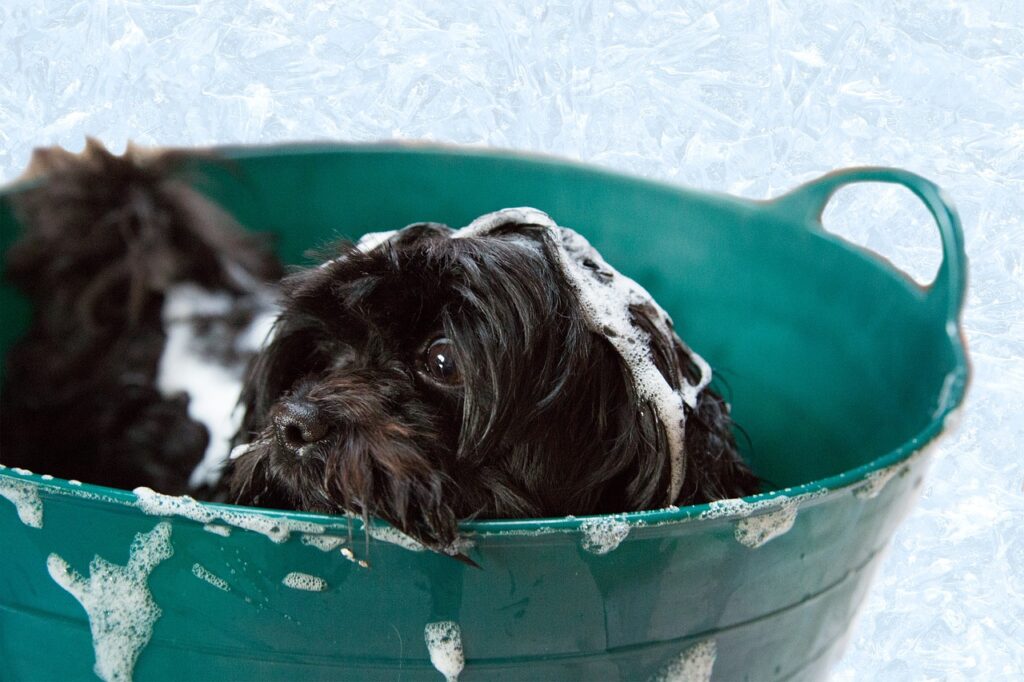
A good bath is another simple way of getting rid of fleas on your dog.
Consider adding lavender oil and some of the natural repellants that we have highlighted in this post to make the bath effective.
You can use a good shampoo that is designed to eradicate not only fleas but also ticks and other varmints.
Check this post for the best options: 10 Best Tick Shampoo for Dogs
46. Regularly Wash Your Dog’s Bedding
If your dog has fleas, there are high chances that he has shed a good percentage on his beddings.
We have highlighted several ways of treating a dog’s bedding but if you can’t remember any, don’t fret; a good soak in lemon water should knock out these bloodsuckers fast.
Remember to properly dispose of the wastewater down the drain lest these little buggers re-emerge hours after being submerged and cause your dog and household more troubles.
47. Good Diet and Grooming
Giving your dog a good, healthy diet can go a long way in keeping fleas at bay.
Remember that fleas are parasites and tend to attack weak animals.
Think of those malnourished dogs that are often rescued by animal shelters…almost all of them arrive riddled with fleas and mites.
This simply implies that keeping your dog well fed, exercised, and groomed does help.
Besides, if you regularly groom your dog, you are likely to notice flea infestation before it becomes a nightmare and takes immediate steps to eradicate the pests.
48. Treat Your Dog’s Items With Heat
Another great way to keep your dog’s bedding, clothing, and toys flea-free is treating them with heat.
Strive to wash any item that can be washed in hot water or dried on high heat on a weekly basis.
Fleas cannot survive the double attack of heat.
49. Treat and Maintain Your Lawn
Keeping your lawn trimmed will reduce the population of fleas and other insects in your backyard.
The less conducive your backyard is for these parasites to live and reproduce, the less they will bring troubles to your household.
When treating your lawn, always use 100% non-toxic, organic products to ensure the safety of your dog, other pets, and family members.
Avoid toxic chemicals as they can be harmful to your children and pets.
Check this post for the best yard sprays that are safe for pets: 5 Best Tick Sprays for Yard (Safe for Pets)
50. Limit Your Dog’s Outdoor Activity
If you’ve treated your yard and home but you still see fleas on your dog, you may want to consider limiting your pooch’s outdoor activity.
Most likely, your canine friend is getting the fleas from other dogs or other environments that harbor flea eggs.
Although it may seem a bit unfair, limiting your dog’s exposure to the outdoors can go a long way in bringing flea infestation to an end.
Final Thoughts
Fleas and their bites are a nuisance to both you and your canine companion.
What starts out as a minor flea infestation can turn into a nightmare as these pesky insects spread and multiply.
However, you can always overcome them with some of the products that you already have in your home.
When trying the solutions that we have listed here, pay attention to what works best for your dog and household to increase your chances of success.
You should also keep in mind that no remedy is perfect, and the primary use of most home remedies is for repelling the little bloodsuckers—not putting an end to an active infestation.
So, if a remedy doesn’t take care of your problem as fast as you expected, then it may be best to try chemical-based methods, over-the-counter solutions, or a prescription from your vet.
And if you are unsure about the best or most suited home remedies to get rid of fleas on your dog, talk to your vet about it.
They understand your dog’s biological makeup best and can recommend the safest and most effective flea control method.
Related Posts:
Best Home Remedies for Dog Drooling
What Home Remedy Can I Give My Dog For Shedding?
How to Get Rid Of Dog Warts At Home (with 17 Simple Remedies)
As an Amazon Associate, we may receive a small commission from qualifying purchases but at no extra cost to you. Learn more. Amazon and the Amazon logo are trademarks of Amazon.com, Inc, or its affiliates.

